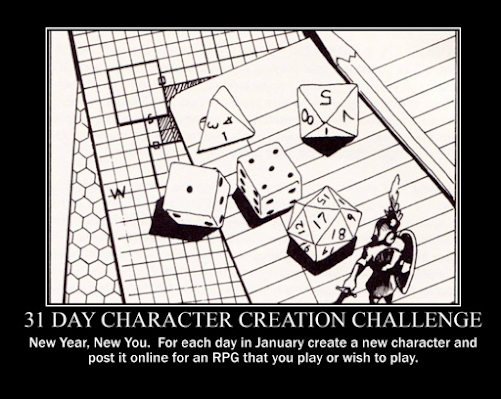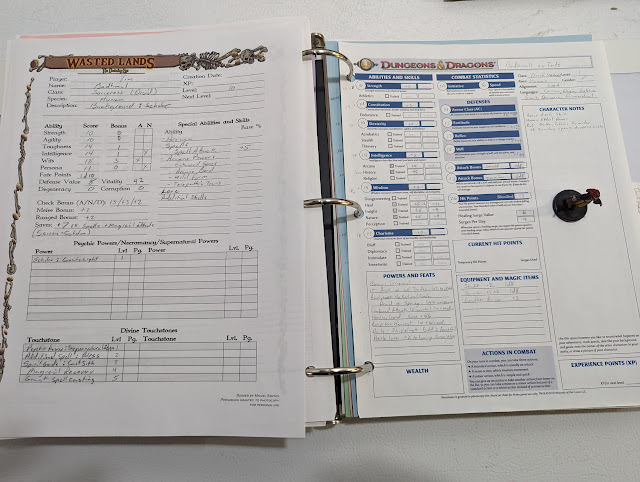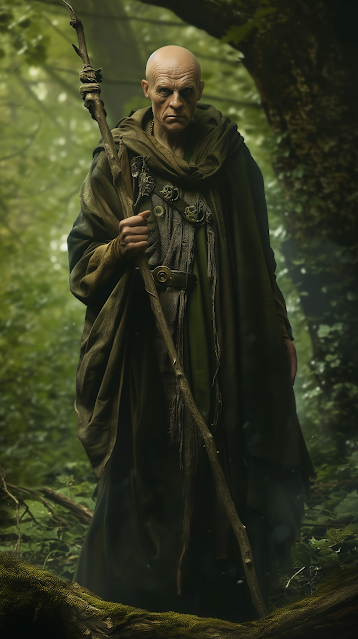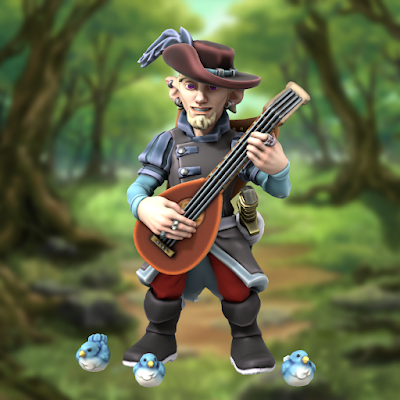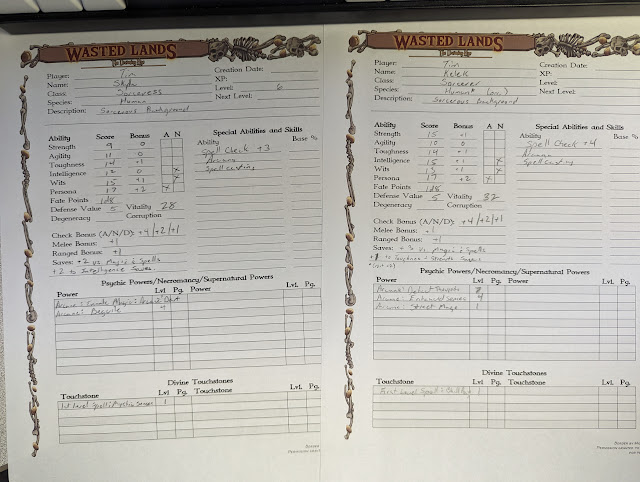Before the advent of the internet, the magazine was the focus of the hobby’s attention, a platform in whose pages could be news, reviews, and content for the roleplaying game of each reader’s choice, as well as a classified section and a letters page where the issues of day—or at least month—could be raised and discussed in chronically lengthy manner. In this way, such magazines as White Dwarf, Imagine, Dragon, and many others since, came to be our community’s focal point and sounding board, especially a magazine that was long running. Yet depending upon when you entered the hobby and picked up your first issue of a roleplaying magazine, you could have missed a mere handful of issues or many. Which would have left you wondering what was in those prior issues. Today, tracking down back issues to find out and complete a magazine’s run is much easier than it was then, but many publishers offered another solution—the ‘Best of…’ magazine. This was a compilation of curated articles and support, containing the best content to have appeared in the magazine’s pages.
1980 got the format off to a good start with both The Best of White Dwarf Scenarios and The Best of White Dwarf Articles from Games Workshop as well as the Best of Dragon from TSR, Inc. Both publishers would release further volumes of all three series, and TSR, Inc. would also reprint its volumes. Other publishers have published similar volumes and in more recent times, creators in the Old School Renaissance have begun to collate and collect content despite the relative youth of that movement. This includes The Gongfarmer’s Almanac which has collected community content for the Dungeon Crawl Classics Roleplaying Game since 2015 and Populated Hexes Monthly Year One which collected the content from the Populated Hexes Monthly fanzine. The ‘Best of…’ series of reviews will look at these and many of the curated and compiled titles from the last four decades of roleplaying.
—oOo—

The
2015 Gongfarmer’s Almanac was published in 2016. It is the first of several annual compilations of the fanzine, the
Gongfarmer’s Almanac, created by dedicated fans of Goodman Games’
Dungeon Crawl Classics Roleplaying Game (and later
Mutant Crawl Classics Roleplaying Game – Triumph & Technology Won by Mutants & Magic, the spiritual successor to
Gamma World) published by
Gongfarmer’s Local #282. Both the creation of the individual issues and the compilations of Gongfarmer’s Almanac are volunteer-led and both the individual issues and the compilations are available in different formats. This includes being available for free as PDFs and then as inexpensive softbacks and paperbacks. So, in the case of the
2015 Gongfarmer’s Almanac, which was created and compiled by the members of the
Dungeon Crawl Classics Google+ Community, that is over three hundred pages of content that the Judge can pick and choose from for her campaign. This includes new Classes, spells and rituals, monsters, treasure, Patrons, adventures, campaign material, and more. All of it optional, but all of it worth looking at given its obvious value for money.
However, the volunteer-led nature of the
2015 Gongfarmer’s Almanac is not without its consequences. Although the layout of the compilation is decent enough, the organisation is not as straightforward as it could be. The compilation is organised and numbered as individual issues, rather than as a whole, and the individual entries vary in length. The individual issues though, are organised thematically, so the first issue is dedicated to Classes and spells, the second to monsters, treasures, and Patrons, the third to scenarios, and so on. This, plus the repeated inclusion of the table of the contents does help the reader navigate her way around the compilation. It should also be noted that the physical quality of the compilations are not of the highest quality, which in part, is due to the low cost. Lastly, the
2015 Gongfarmer’s Almanac contains not five issues as stated in the initial individual sections, but a total of six.
The ‘PC Classes’ opens with Julian Bernick’s ‘Assassin’, which mixes the Thief’s stealth skills and backstab ability with the ‘Gift of Venom’, which forces the defendant to save versus Poison, but if failed, can have various effects, including being weakened, inflicting extra damage, and even death. In addition, the Assassin can also assassinate a totally surprised opponent! The ‘Dervish’ by Edgar Johnson is a holy warrior, Neutral by alignment, but highly religious, specialises in the use of one weapon, and mixes in a lot of different abilities taken from the Paladin, Ranger, and Thief Classes. This quite a focused and strong Class. ‘Gold and Glory Beyond the Grave Un-dead PC’s in DCC RPG’ by Taylor Frank gives options for playing undead characters such Ghost, Skeleton Warrior, and even a Vampire. These cross over in the Chaotic Alignment, even evil, and so are suited to some campaigns more than others. Reid ‘Reidzilla’ San Filippo’s ‘The Luchador’ is drawn from the author’s
Umerica setting, blessed by the Bueno-god El Santo, patron of monster slaying wrestlers, channelling the hope Luchadores channel of their peoples and their indomitable will through outlandish mystical masks to empower their ancient, unarmed fighting techniques. They have Mighty Deeds of Wrestling including for acrobatic strikes, blinding attacks, choke out, demoralising taunts, and more. It is a fun all-action, brawling Class. Lastly, David Baity’s ‘The Sword Monger A DCC Optional Class’ is very clearly inspired by the film,
Highlander, presenting sword-wielding warriors who can be killed by decapitation and when they kill one of their own, they gain a portion of his Hit Points and kill enough of them will improve stats. This makes them quite powerful. Overall, this is interesting mix of new Classes, some of which may well be too powerful or radical for some campaigns.
‘Rituals & Spells’ gives several spells such as
Blood Splash, a First Level Wizard spell by Reece Carter, in which the caster cuts himself and sprays at opponents to inflict damage, whilst Terry Olson’s
Temporary Creation is a First Level Cleric in which the caster draws upon his deity’s power to temporarily create semi-divine, though ordinary items.
Vacuity by Chris Fassano is a Third Level Wizard spell which draws all of the air out of the target’s lungs and at its most powerful creates a black hole which leads to a different world. This is an interesting mix and spellcasters can have some fun with them.
The first of the items of treasure is ‘Items to Die For’ by Kyle Turner. These are a trio of interesting magical items, all nice and easy to use, like the
Harrow, a bow of gnarled, polished bone that does no damage, but renders a particular body part broken and useless on a hit, but on a critical miss does the same to an ally, whilst
Yi’ao, the Flame is a burning iron sword that never goes out, requires a marble scabbard(!), and burns its wielder. Jordan Smith’ ‘Objects of Wonder from the Ruins of Glittergus’ offers a handful of items like the
Eye of Occultation and the
Crown of the Ape King, whose background in the Swamp Kingdoms of Jersey and the scattered lands of Brokendyn, all suggest a post-apocalyptic origin, but they all still feel magical rather than technologically derived, but all are engaging described, whilst ‘Pelagian Equipment’ by Bruce Clark, describes two items that part of the domain of Pelagia, the Sea Goddess. One is
Pelagia’s Holy Vestments, robes that grant faster swimming and an entanglement—in seaweed, of course—power that needs to be rolled for, the other a
Portable Jellyfish which can be thrown like a grenade for electricity damage! ‘The Wall of Kovacs’ is a transient wall of various materials which can appear anywhere, again and again. Created by bygrinstow and inspired by the work of Goodman Games regular artist, Doug Kovacs, it causes Chaotic transformations in those who touch it, so the players and their characters are likely to come to fear and curse its presence.
The Patrons are all fully written up with spells patron gifts. Randall D. Bailey Jr.’s ‘Ghrelin’ is “The Demon Lord of Hunger and Starvation…” who “cares about nothing but consuming.”; bygrinstow’s ‘The Great Ebony Hand’ details as inscrutable a Patron as you could imagine, since you can talk to and invoke the Great Ebony Hand, but it never talks back. It can though provide a protective, ghostly hand, spells that allow communication via sign language, poke doom at a target, and so on; and ‘Patron: Hecate’ by Doyle Wayne Ramos-Tavener describes a patron of witches who sends nightmares, can raise the dead, and so on. This is a dark version of Hecate and witch-type characters, and highly suitable for NPCs and grimdark campaigns, but unfortunately feels incomplete with the inclusion of the one spell.
‘Volume 3: Adventures’ contains fives adventures of varying quality. They begin with Clint Bohaty’s First Level adventure, ‘Hemlock Bones Mystery Adventure #1: The Coal Snoot’. Inspired by the works of Sherlock Holmes, the Player Characters are hired by the brilliant and annoying wizard, Hemlock Bones, to help him solve a locked room murder. In other words, they do the work and he takes the credit. It is all set-up—quite detailed set-up—which the Player Characters have to solve. This is very much left open and so will take a fair bit of work for the Judge to run as is. The format, with a Sherlock Holmes-style NPC present, has the potential to overbear the efforts of the Player Characters, but the advice on handling him is decent, mostly keeping him offstage. Peter Mullen’s ‘The Marvelous Myriad Myconid Caverns’ is for Third and Fourth Level Player Characters is actually marvellous, a series of caves and tunnels off the River Yimmer in the Endless Dungeons of Acererak. There are touches of whimsy and strangeness to the encounters with Morse Trolls who tap out messages across the dungeon, gremlin dungeon punks, Sergeant Luggbodduggo, a Nail-head Hobgoblin on a fishing trip, a monstrous troglodyte chief armed with the
Gorgosaurus Sword—a dinosaur in weapon form! Accompanying the scenario is a lovely map and this really is a charming dungeon which creates a world of its own, not only the best of the five dungeons in the
2015 Gongfarmer’s Almanac, but amongst the best of the content in the compilation.
‘May Flowers’ is a Zero Level Funnel by Daniel J. Bishop. The uncovering of an icon of the ancient Chaos goddess, Flos Tenebrarum, the Flower of Darkness, unleashes the sudden flowering of strange predatory plants. Essentially, it turns a farmer’s field into a garden-themed dungeon, a deadly one at that, and if it feels somewhat one-note in that theme, much of the joy of the adventure is going to come from Zero Level Player Characters live and die in the course of dealing with the newly grown problem. Just as with other Zero Level Funnels. Jon Hook’s ‘Tomb of the Thrice-Damned War Witch’ is a deadly, tomb-raiding adventure for Fourth Level Player Characters, built to contain the spirit of a powerful war witch in ages past. Relatively short, it is full of puzzles and traps and the sort of adventure in which things are best well left alone. The war witch’s treasures are powerful, especially if a Player Character is a Warrior of Chaotic alignment, but if not, there is a wand capable of creating portals large to transport soldiery and siege engines across vast distances which could be useful. Otherwise, even the author describes entering into the tomb as a fool’s errand.
Lastly, ‘The Worm Cult of Laserskull Mountain’ by Noah Stevens mixes a range of genres—Science Fiction, the post-apocalyptic, and fantasy—to create an adventure site ready to be scaled and adapted to the Player Characters. Laserskull Mountain is where the people of sector bring their dead to be interred by the Embalmers and eulogised by their dirge-singing Crystaloid Computer, but it has been recently invaded by Worm Cultists who are digging down in search of the Humming Egg and then occupied by the Android Enchantress as a forward operating base in her war against the Cyberlich, whose attack is imminent… It will require a fair degree of effort upon the part of the Judge to prepare, since she will need to provide all of the stats. Otherwise, this is nicely detailed and awaits the right spot in the Judge’s campaign to be placed.
The fourth, fifth, and subsequently, sixth part of the
2015 Gongfarmer’s Almanac all fall under the label of ‘Rules & Campaign Miscellany’. This consists of content that does not fit under any of the other categories given in the earlier volumes, which include setting content, general articles, and more. Roy Snyder’s ‘Black Blood Pass – A Mini-Gazetteer’ describes a nearly impassable pass through mountains, fallen to ruin since the Demi-Lich Rj’nimajneb~Yor’s forces to occupy the Fang, the fortress dominating the pass. The Demi-Lich is fully detailed, including its abilities and magical items, alongside location descriptions and hooks. It is a pity that it is a ‘Mini-Gazetteer’, since there is plenty of scope for expansion and more detailing. A map perhaps would have been useful to help the Judge develop the lengthy location further. ‘Chirumancy’ by James MacGeorge offers an alternative to healing magic of the Cleric, Chirurgeons, who as the masters of the arts of dark surgery, seal wounds with carcinomas, replace lost limbs with those taken from corpses, and worse. There are side effects though, beginning with a persistent cough or chronic incontinence and going all the way to seizures and tumours! Another problem is that the newly attached body parts may not match those lost, due to either Species or gender! This is delightfully grim, a bloody, inconsistent counterpart to the sterility of divine healing magic.
There is a set of tables by Tim Callahan to create non-traditional haunted and doomed locations with ‘Crawling Castle of Grumblethorn and Other Architectural Horrors’; an actual ‘The Gongfarmer’s Almanac’, a calendar by Doyle Wayne Ramos-Tavener to add omens, events, and Wizard and Cleric spell check modifiers day-by-day to a campaign or serve as a model for the Judge’s own; a table of events and encounters by Kane Cathainm ‘Tales of Travels, Trials, & Chance Meetings’, to role on between adventures to make the Player Characters’ lives interesting; and ‘The Virtual Funnel: Making Higher Level DCC RPG Characters with Real Class’, Paul Wolfe’s solution for creating the backstory to Player Characters created at higher Level. This starts with the Zero Level Character Funnel and takes them up Level by Level to the Player Character’s starting point. A very useful set of tables which could easily have found itself in the
Dungeon Crawl Classics Companion if there were such a thing for the roleplaying game. There is even another scenario, ‘The Demon’s Conscripts’, a mid-Level affair in which the Player Characters encounter foreign soldiers who have been partially possessed by demons. Again by Paul Wolfe, these are Samurai, and includes stats for various Japanese monsters and martial weapons, alongside an interesting situation.
And then, the ‘Master Zine Index’ lists every adventure, gadget or gear, magical item, monster, NPC, Patron, ritual or spell, rules, rumours, and campaign seeds, and anything else to have appeared in the nine or so fanzines then in print! It was an amazing undertaking in 2015. It would be a daunting task almost a decade on in 2024!
Physically, the
2015 Gongfarmer’s Almanac is rough around the edges and has cheap, pulp quality to it. There is very much the feel of the fanzine to its pages, both in terms of presentation and quality of content. There is though, nothing wrong in this, for there is a wide variety of content and none of it is presented in a less than readable fashion. Rather that anyone expecting something more polished will be disappointed.
The likelihood is that the Judge is never going to use all of the content of the
2015 Gongfarmer’s Almanac, but there is very likely going to be something its pages that she will find useful or she can adapt or incorporate into her campaign. It is a medley of ideas, monsters, adventures, options, treasures, gods, and much more. The
2015 Gongfarmer’s Almanac was an impressive collation in 2016 and if it has been outclassed by the volumes in the series that followed, it was still an incredible, fan-driven undertaking that captured the imaginations of
Dungeon Crawl Classics fans at the time.

 Liath Luchara
Liath Luchara